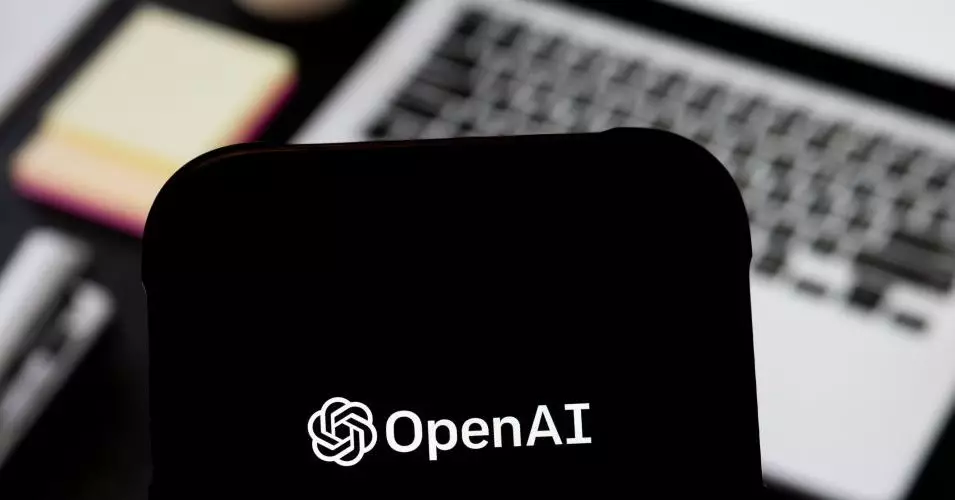In the rapidly evolving landscape of artificial intelligence, the recent announcement by OpenAI’s CEO, Sam Altman, about the introduction of an open-weight language model signifies a major turning point. Altman’s declaration not only pivots the company’s strategy in the face of fierce competition from models like DeepSeek’s R1 but also reflects the industry’s broader trend towards openness and accessibility. This move appears to be a direct acknowledgment that the tech giant must adapt or risk falling behind, as more lightweight and economically feasible options gain traction among developers and businesses alike.
DeepSeek’s R1 model, launched earlier this year, has set a benchmark that OpenAI cannot ignore. Altman’s earlier commentary expressing concern about being “on the wrong side of history” signals a palpable urgency to embrace transparency in AI development. The tech landscape thrives on innovation, and OpenAI’s intention to release a new model with open weights not only surfaces a competitive edge but may also redefine the standards for AI applications.
Why Open Weights Matter
The term “open weights” refers to a model’s internally adjustable parameters, which researchers and developers can access, modify, and improve upon. This accessible nature promotes experimentation and innovation, significantly lowering entry barriers for organizations keen on utilizing AI for different applications. As Clement Delangue, cofounder of HuggingFace, noted, the rising interest in open-weight models is a catalyst for recognizing their inherent power.
In stark contrast to traditional proprietary models, which are often expensive and heavily restricted, open-weight models are not only more affordable but also adaptable to specific environments, such as those requiring heightened data confidentiality. Developers can customize these models for sensitive tasks without the burdensome licensing agreements that accompany closed models. This flexibility is crucial for businesses looking to integrate AI safely and effectively.
The Tension Between Innovation and Safety
However, the enthusiasm surrounding the advancement of open-weight models does not come without its concerns. Experts like Steven Heidel and Johannes Heidecke from OpenAI emphasize the need for stringent safety protocols. The duality of open-source technology—its potential to empower developers while simultaneously posing a risk for misuse—reflects a fundamental challenge. There is legitimate apprehension that these models could inadvertently aid malicious actors in launching cyberattacks or developing harmful technologies.
The responsibility lies heavily on developers and organizations like OpenAI to establish frameworks and safeguards that adequately address these risks. Altman’s insights on navigating this complex landscape hint at a commitment to ethical AI deployment. OpenAI has indicated that thorough testing will accompany the release of the open-weight model, setting a precedent for responsible innovation in an era where the stakes have never been higher.
A Call to Developers
The strategic maneuvers by OpenAI also open a dialogue with the developer community. The invitation for early access to the new model fosters a collaborative environment, encouraging innovative applications that push the boundaries of what AI can achieve. To facilitate engagement, OpenAI plans to host events showcasing early prototypes—a move that may significantly amplify community involvement in refining and enhancing the technology.
Meta paved the way with its Llama series, yet certain pitfalls underline that being open doesn’t necessarily mean being transparent. Limitations imposed by Meta’s licensing structure hinder full exploitation of open-weight models. This revelation raises questions about the true openness of supposedly open-source technologies. Balancing the desire for innovation against the potential for proprietary restrictions remains a crucial dialogue among AI developers.
The Future of AI in an Open Landscape
Ultimately, OpenAI’s forthcoming open-weight model stands to challenge the status quo while igniting an electric conversation about accountability, accessibility, and agility in AI. As the landscape continues to expand, it is clear that the synergy between open-source development and corporate responsibility will play a definitive role in shaping the future of artificial intelligence. By fostering an environment that promotes both innovation and safety, OpenAI is not merely participating in the AI race but is aiming to redefine how it’s run. The future of AI could indeed be illuminated by this profound shift towards open weights—an empowering ideology for developers worldwide.

